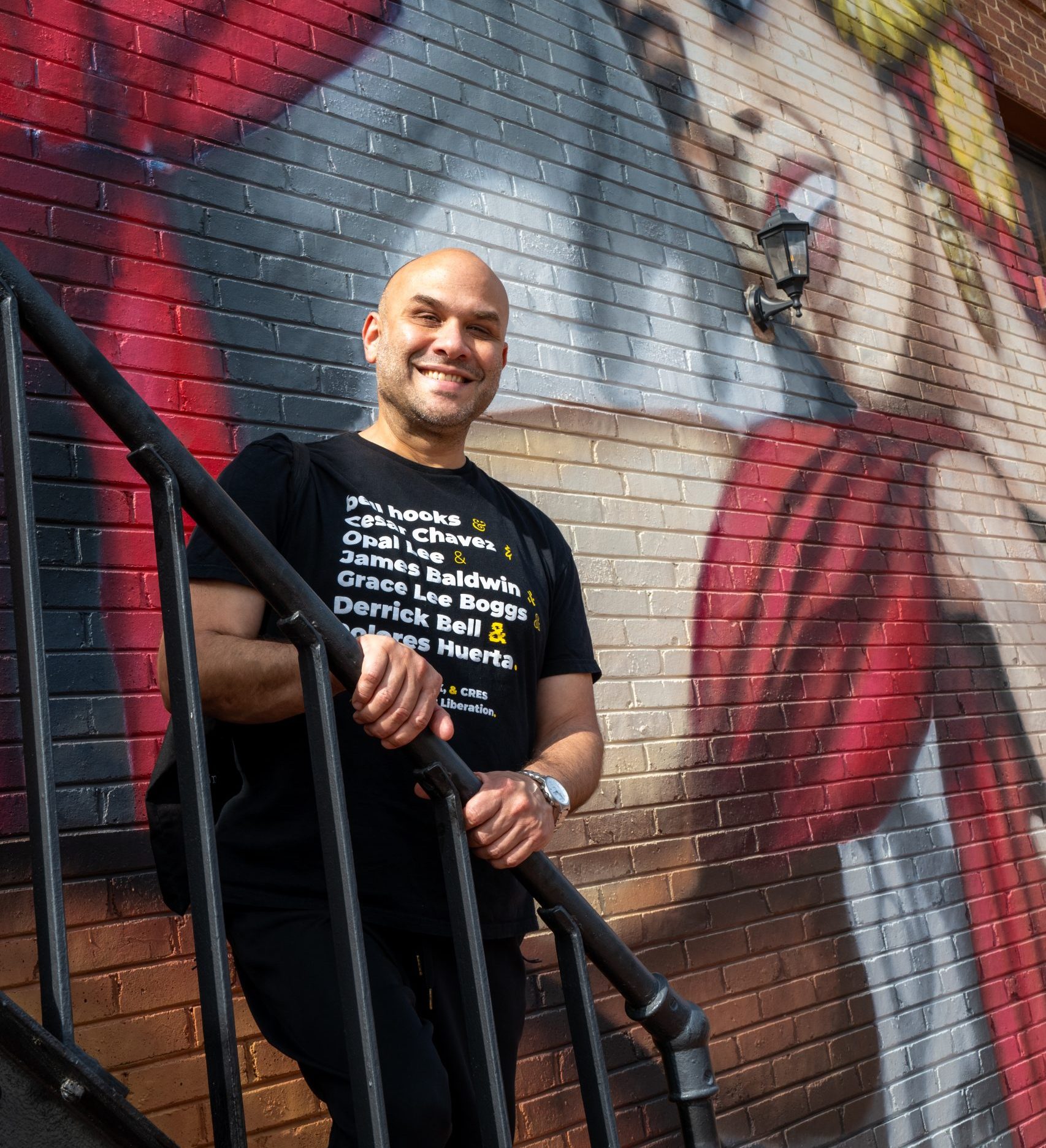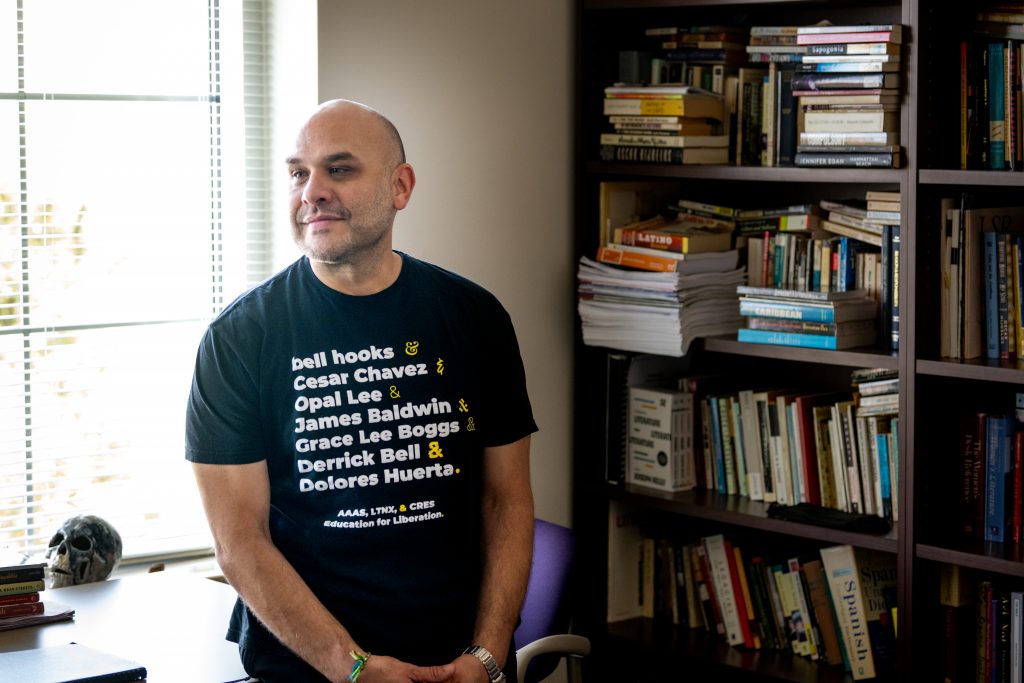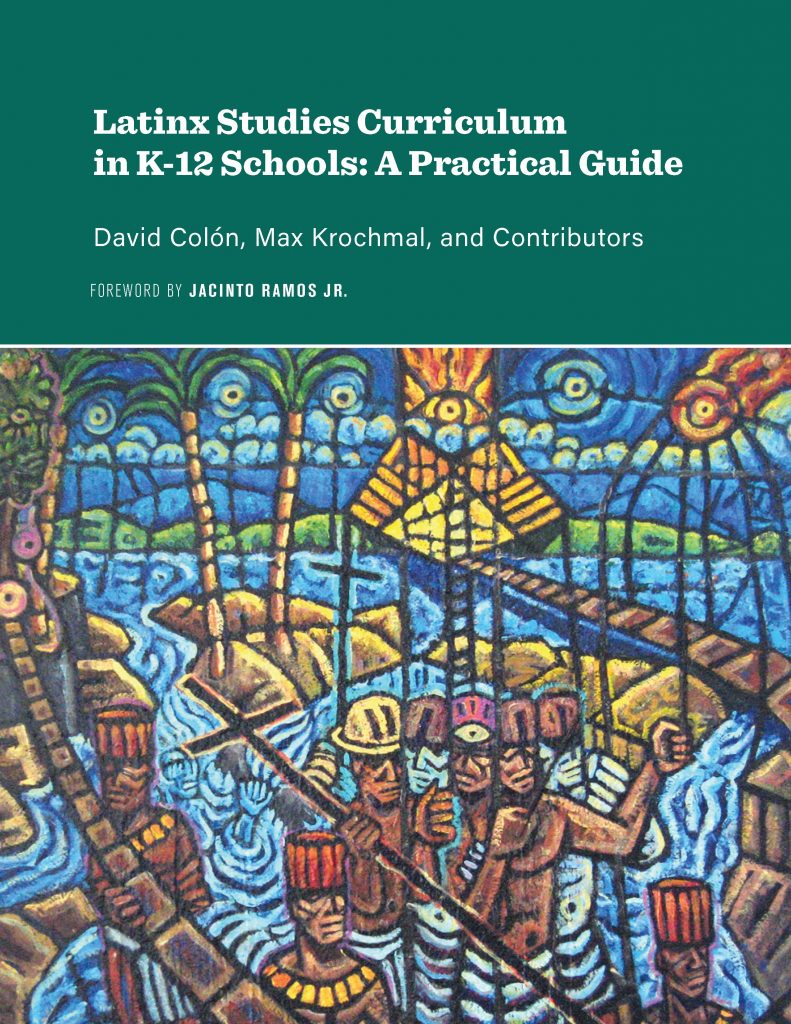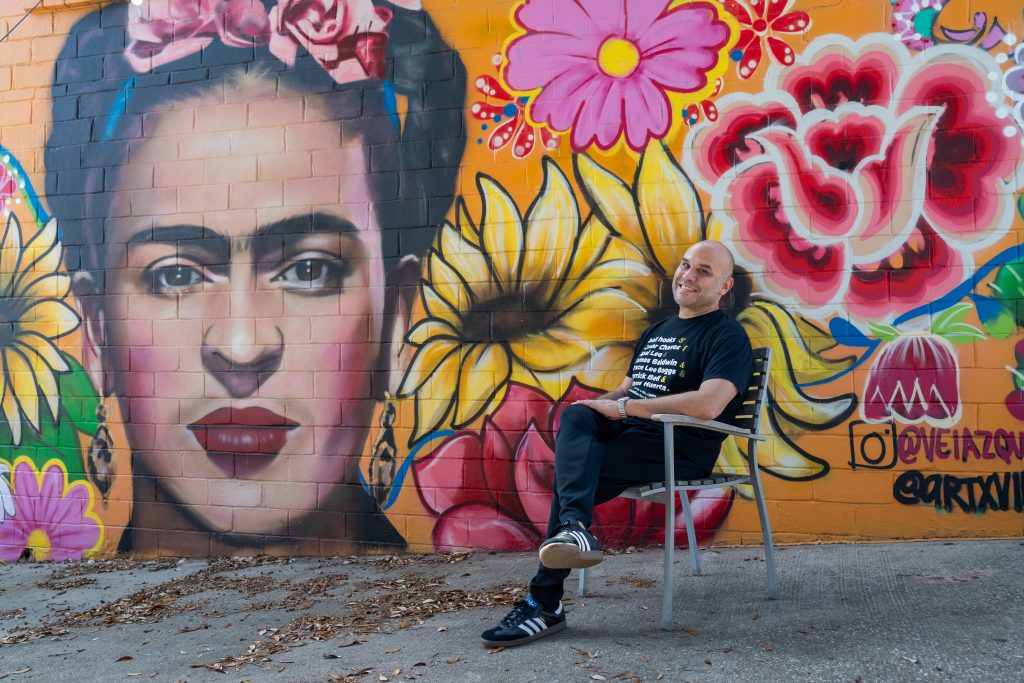Painting a Fuller Picture
With TCU’s help, the Fort Worth school district bolsters its lessons on Latin American history and culture.

David Colón, standing in front of a mural by artist Juan Velázquez on the Original Mexican Eats Café in Fort Worth’s Northside neighborhood, co-created a program and guidebook that helps Fort Worth teachers instruct students about the Latin American community’s cultural contributions and significant historical events.
Painting a Fuller Picture
With TCU’s help, the Fort Worth school district bolsters its lessons on Latin American history and culture.
When thinking about American history, does the Chicano Movement come to mind? The answer is often no, said David Colón, a professor of English at TCU. Social studies textbooks focus disproportionally on white historical figures as compared to historical Latin American communities. The Chicano Movement, which refers to widespread political and social activism by Mexican Americans during the civil rights era, was a major force in shaping the United States of the 21st century.
Social studies textbooks tend to follow the “great men of history approach of the Founding Fathers,” Colón said. “And then there’s labor history, social history … but both of those narratives have centered on Anglo-Americans to the point of erasing the histories of other communities.”

David Colón, professor of English at TCU, is the co-creator of Latinx Studies Curriculum in K-12 Schools, a project that started in 2018 after the Fort Worth Independent School District sought help developing an overlay for its existing social studies curriculum.
When Colón talks about Latin American culture, he does so with passion. His parents were born and raised in Puerto Rico, and he said he seeks to empathize with students who may not see themselves reflected in mainstream education.
Colón is the co-creator of Latinx Studies Curriculum in K-12 Schools, a social studies guidebook and curriculum designed to help teachers instruct students about the cultural contributions of Latin American communities as well as significant historical events not typically covered in classrooms.
He cited the Pueblo Revolt of 1680 — a revolution in which the Pueblos of New Mexico fought against Spanish colonization — and the Treaty of Guadalupe Hidalgo, an agreement in which Mexico transferred 55 percent of its territory to the U.S. to end the Mexican-American War.
The project began in 2018, when the Fort Worth Independent School District asked scholars to help the district develop an overlay for its existing social studies curriculum. Colón said TCU’s Comparative Race & Ethnic Studies program “answered the call,” which involved providing the district with curriculum resources and bibliographies, a guide with ideas for national and regional field trips, and a 26,000-word essay on the field of Latinx studies.
Colón said the need for additional instruction was inspired by changing student demographics. The Fort Worth Independent School District reports that 64.8 percent of its students are Hispanic or Latino.
Colón said the curriculum overlay was also intended to help teachers expand their awareness of Latin American culture so they can better relate to and connect with their students. “A lot of times,” Colón said, “an Anglo teacher will find themselves in a classroom with 37 Mexican students.”
A Group Effort
Research for the initial version of the guidebook was led by Max Krochmal, then-chair of TCU’s Department of Comparative Race & Ethnic Studies, and Colón. Krochmal served as principal investigator, while Colón was the primary author.
Faculty from the journalism, religion, political science, education and comparative race and ethnic studies departments also contributed, as did Cecilia Sanchez Hill, who was then a doctoral student of history. Hill spent seven years as an educator in the Fort Worth district and gained experience researching Mexican American history for her master’s degree, which she said was helpful when working on the book’s section on local history.

The curriculum guidebook emphasizes history relevant to the groups represented in Fort Worth’s population, primarily Mexican, Puerto Rican and Central American, David Colón says.
One of the first steps was hosting town hall-style discussions with district stakeholders, including teachers, students and parents. The goal was to determine the district’s objectives for the guidebook and how the TCU team could help achieve those goals.
Melita Garza, then a TCU faculty member and now associate professor of journalism at the University of Illinois Urbana-Champaign, contributed to the curriculum and was present for the discussion sessions with district constituents. She said a major stakeholder request was that “Latinos not appear as a monolithic group” and that the curriculum include representation of Puerto Rican, Cuban, Central American and South American people.
The team figured out how to present Latin American history in chronological and thematic order. Colón said the book emphasizes history relevant to the constituency groups represented in Fort Worth’s population — primarily Mexican, Puerto Rican and Central American.
The team audited the district’s curriculum to correct inaccuracies and find ways to improve its perspective of Latin American people, such as reviewing language that could influence students’ impressions of these communities.
During the audit, Hill said, she objected to an eighth-grade reading assignment. The text said that “ ‘Americans looked west to what they saw as a vast wilderness, ready to be taken,’ but does not clarify that it was not a vast wilderness,” Hill said.
Additionally, discussions of immigration from the Colonial era to Reconstruction focused heavily on Chinese and European immigrant experiences but did not mention Mexicans.
Colón later revamped the guidebook to become a stand-alone text. The updated guidebook was published by TCU Press in 2022.
Included is Garza’s research focus on immigration, Mexican Americans, democracy and the media. She said she wanted the guidebook to discuss the advent of Latinx media so students could learn about inclusive journalism.
“I was particularly interested in the topic of migration,” she said, “and particularly wanted to see the broad topic of the emergence of Latinx media included in the curriculum.”
She said students should learn about the historical importance of news entities such as the Spanish-language publication La Prensa, which was founded in San Antonio in 1913. She said the contributions of Latin American journalists and publications tell a story of agency and ability that shouldn’t be overlooked in social studies curriculums.
While he was compiling resources for the guidebook, Colón said, some findings surprised him, like when he read about systemic slavery under Spanish colonization and how it differed from the English model. In his reading, he learned about societies of African descent across Latin America that became independent despite colonialism. He said he thought findings like this would inspire students and free them from absolutist thinking.

The curriculum overlay that his team developed is also intended to help teachers expand their awareness of Latin American culture, says David Colón, here in front of a mural by artist Juan Velázquez on the Islas Tropicales restaurant.
The value of perspective
Public understanding of Latin American issues is improved when discussions include insights from people with complex relationships to those topics, Colón said. “We’re trying to amplify [non-Latinx] students’ and teachers’ and administrators’ abilities to be able to have a vicarious experience of a different culture.”

While students are learning about the 1960s, TCU professor of English David Colón said, “there were other things that were going on simultaneously that really have laid the bedrock for equal opportunity equity today.”
He said students need exposure to the perspectives of Latin American people to have a well-rounded understanding of American society. “They’re learning about the ’60s and they’re hearing about Woodstock or they’re hearing about NOW or they’re hearing about Watergate,” he said, but “there were other things that were going on simultaneously that really have laid the bedrock for equal opportunity equity today.”
Hill said the Civil Rights Movement becomes more nuanced when Latin American activism is included in the conversation. By hearing historical voices, she said, students learn about civil rights topics such as the Chicano Movement and the establishment of the Young Lords Party. Originally a street gang in Chicago, the Young Lords organization was a Puerto Rican civil rights activist group founded in 1968 and modeled after the Black Panthers.
“There’s that section that’s titled ‘The Long and Wide Civil Rights Movement,’ ” Hill said, “because, you know, it starts much earlier than what you were traditionally taught in school.”
Garza said the guidebook builds on the U.S. Constitution.
“When the Constitution of the United States was written in 1787, the first of its stated goals was to establish justice,” she said. “We are still working on our more perfect union more than 200 years later.”
She said understanding the contributions of Latinx people is important for all Americans and can help decrease tension between racial groups. “I feel strongly that improving education and knowledge of history through a project like the Latinx Studies Curriculum is one important way to build a more perfect union and to promote a just and inclusive society.”

Your comments are welcome
Comments
Related reading:
Research + Discovery
Crypto Characters
Grant Ferguson’s research on cryptocurrency investors bucks preconceived notions.
Research + Discovery
Deeper Compassion
Joe Hoyle’s capstone project examines the impact of empathy training on scuba volunteers.
Research + Discovery
Life on the Fringe
In an award-winning podcast, Tricia Jenkins talks about being raised in a cult.